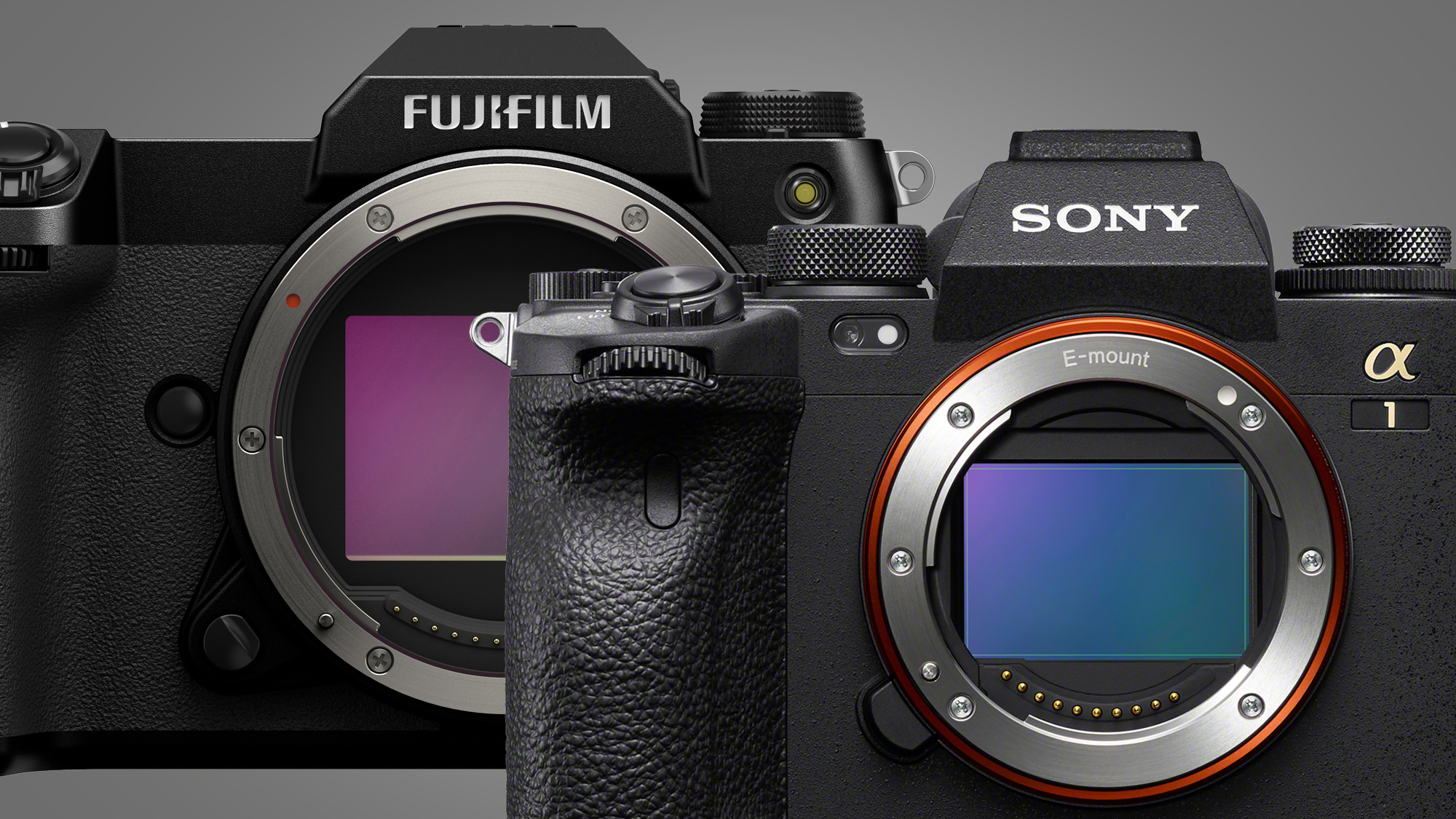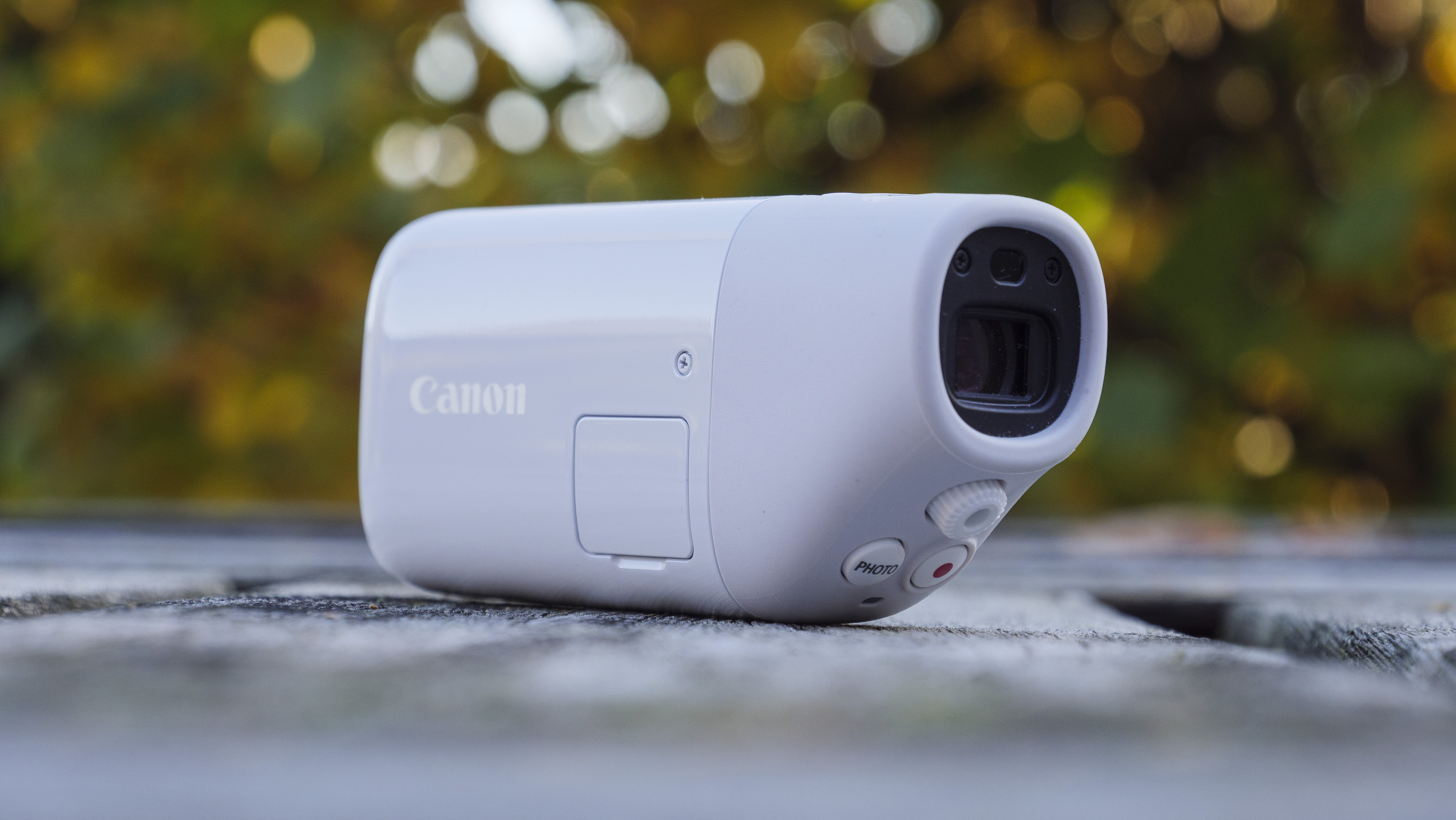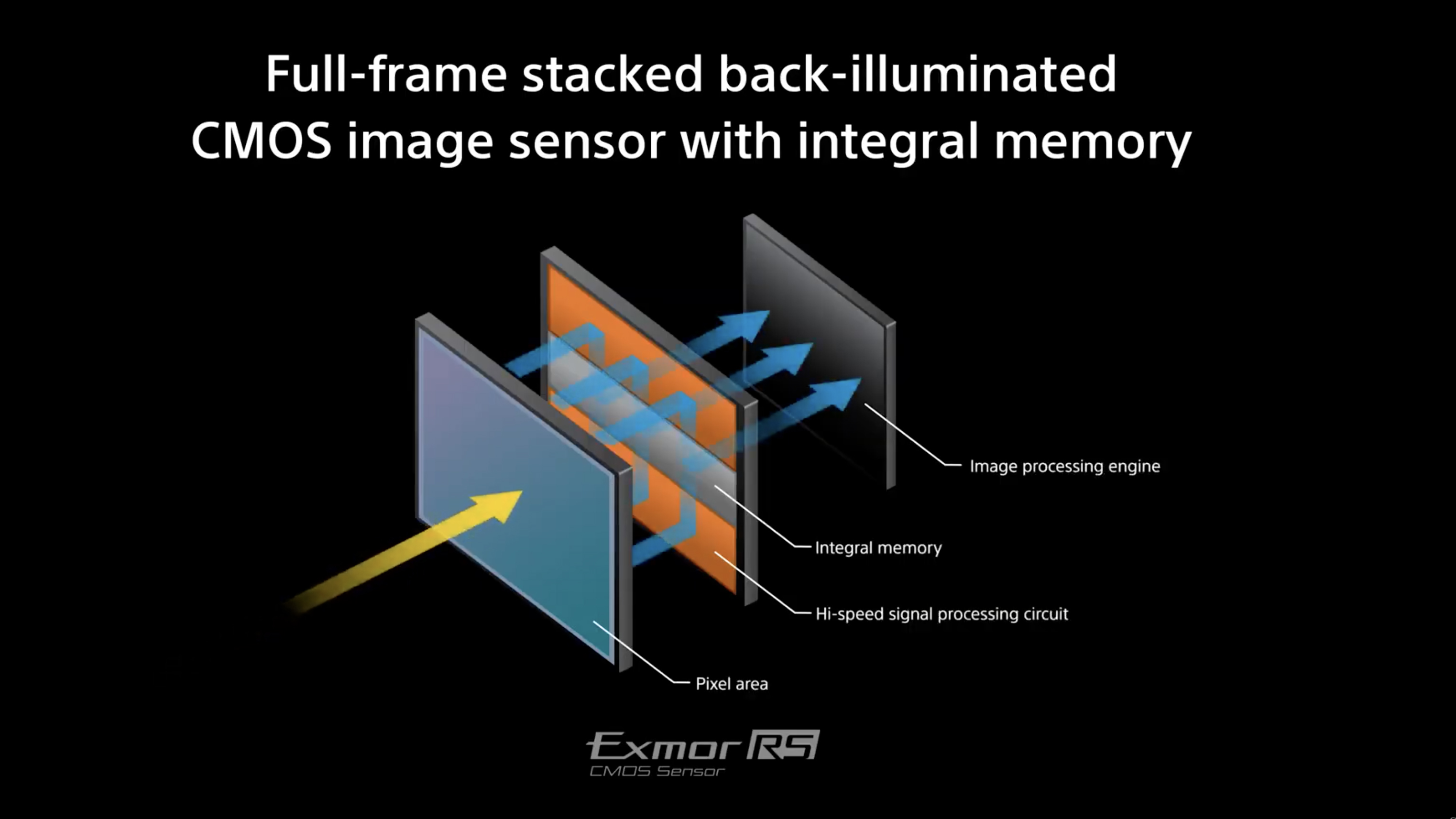Fujifilm GFX100S and Sony A1 show that camera innovation is now mainly for pros
Opinion: Focus is now on the high-end more than ever

The tough part about being a camera fan in 2021 is counting all the zeroes on the price tag of another amazing new launch. This week, the Fujifilm GFX100S and Sony A1 both launched within a 24 hours of each other – and their combined price is $12,499 / £11,999. Or, in other words, around 31 Moflin pet robots.
As you'd expect, both of these cameras are high-end professional models with some amazing innovations. And given their historical precedents, neither can really be called overpriced either – if anything, the Fujifilm GFX100S is 'affordable' for a 102MP medium format camera.

But their joint arrival did quite starkly underline a recent trend in the cameras world. The big, exciting launch events are now mostly aimed at professionals – and particularly ones who don't have red exclamation marks next to their bank balances.
Yes, this has always been the case to a degree. But the change is that these pro cameras are increasingly no longer mirrored by equally vibrant or innovative launches further down the scale. And this was neatly illustrated by the relative air-time given to the compact, beginner-friendly Fujifilm X-E4 during the Fujifilm's big launch.
- These are the best cameras you can buy right now
In the shade
The Fujifilm X-E4 looks like a lovely little camera. It's a small, retro street photography companion with a large 26.1MP APS-C sensor and a $850 / £799 / AU$1,399 price tag. But it also echoes many of the recent trends in mid-range cameras – it's slightly dumbed down and pretty iterative.
It's hard to escape the feeling that, in less challenging times for the camera world, the X-E4 would have been given a little more love – weather-sealing, for example, or a new electronic viewfinder (EVF), plus more air time during Fujifilm's launch event. But instead, it was somewhat brushed aside by the Fujifilm GFX100S – and even some excited chat about the Sony Alpha 1.

To be fair to Fujifilm, the company still makes some of the best beginner cameras around, and the X-E4 will likely be among them. As mid-range announcements go, it was nowhere near as underwhelming as Canon's sheepish launch of the Canon EOS M50 Mark II, or watching Olympus walk away from its entire range of hobbyist Micro Four Thirds cameras.
Sign up for breaking news, reviews, opinion, top tech deals, and more.
But it also left no doubt that the focus has now shifted, more than ever, onto high-end trailblazers like the Fujifilm GFX100S and Sony A1. Smartphones may now rule the point-and-shoot world, but full-frame vs medium format is the Godzilla vs Kong battle in camera town.
History repeating
In some ways, the Fujifilm GFX100S is the 2021 equivalent of a camera like the Canon EOS 1Ds from 2003. One of the first DSLRs to come with a full-frame sensor, back then the 1Ds cost you $7,999 (around £5,870 / AU$10,535).
Boundary-pushing professional cameras have, of course, always been expensive. But the slight difference in 2003 was that digital camera sales were moving in an upward trajectory (peaking in 2010) that also supported innovative cameras like the Nikon Coolpix SQ (a square compact with a twisting lens) or the Canon EOS 300D, which brought DSLR cameras to the masses for the first time.

Of course, we've now reached the stage where hobbyist shooters are somewhat spoiled for choice by options like the Fujifilm X-S10, Nikon Z50 and even cheap full-frame options like the Canon EOS RP.
But these are again mostly iterations on a familiar concept, rather than barnstorming mid-range innovators that, for example, meld a smartphone's connectivity and interface with the physical advantages of a dedicated camera. Interesting concepts like the Canon PowerShot Zoom (above) occasionally surface, but are relegated to crowdfunding sites and lack any real commitment.
The last real surge of innovation for mid-range cameras was the arrival of compact system cameras during the mid-2010s. For genuinely new concepts today, camera manufacturers are now understandably putting all their chips on professional flagships like the Fujifilm GFX100S and Sony A1.
Balance of power
So what exactly is so innovative about these new flagships from Fujifilm and Sony? While they both have similarly sky-high price tags, the GFX100S and Alpha 1 are completely different animals, aimed at very different photographers.
The Fujifilm GFX100S is a landmark moment for medium format cameras and, on paper, might just be a dream companion for anyone who loves shooting landscapes, portraits, still life photos and fine art.

The innovation is that it combines a huge 102MP sensor (which is about 67% larger than full-frame sensors) in a body that's smaller and lighter than the full-frame Panasonic Lumix S1, and does all this for a price that's $4,000 less than the Fujifilm GFX100 from 2019.
Until recently, medium format cameras lived in the studio and could only be used in very controlled situations. So while the Fujifilm GFX100s' $5,999 / £5,499 / AU$9,499 price tag isn't in 'impulse buy' territory, it does bring 102MP medium format cameras into the realm of handheld everyday shooting, and on the way to affordability.
What the GFX100S doesn't do, though, is bring high-resolution shooting and 8K video into the worlds of sports and action photography – and that's where the Sony Alpha 1 thrives.
The everything camera
Traditionally, sports cameras have had lower resolution sensors to help them deliver high frame-rate shooting, and have also not been particularly focused on video. But the Sony A1 is its 'kitchen sink' camera, combining a 50MP full-frame sensor with 30fps burst shooting and 8K video for the first time.
There are a few caveats to that headline frame-rate figure – it's only for compressed formats like JPEG, with raw files dropping to a 'mere' 20fps maximum for continuous shooting. But the Alpha 1 is still, on paper, the ultimate sports shooter. What's most impressive about the Sony's flagship, though, is that it isn't just an Olympics camera – it's more like three professional cameras in one.

Along with offering those headline shooting speeds for sports and wildlife photographers, the Alpha 1 also has the resolution demanded by landscape and portrait shooters, plus many of the video skills demanded by pro filmmakers. On that front, you get not only the future-proofing option of an 8K/30p mode, but also a slo-mo 4K/120p mode with 10-bit 4:2:2 bit-depth and color sampling.
To get all of this professional power in a relatively small mirrorless body is something that simply hasn't been done before, even if the Canon EOS R5 came pretty close (and for a much lower price). At $6,500 / £6,500 / AU$10,499, the Sony Alpha 1 is in limited-edition supercar territory – but it does have an innovative spirit that's much-needed further down the camera chain.
Hand-me-downs
If the big camera brands can no longer build mid-range cameras that are as innovative in their own right as professional flagships, hobbyist shooters do at least have the promise of some of this tech filtering down to more affordable cameras.
The Sony A1, for example, added birds to its Real-time Animal Eye AF, which would be a great addition to its more affordable Alpha cameras. The wait might not be too long either, given that we saw Sony's Real-time Tracking AF debut almost simultaneously on the Sony A9 and Sony A6400 back in 2019.

Like a lot of the new features on the Sony Alpha 1, the key is Sony's stacked sensor technology, which combines all the memory and processing on the chip itself to achieve super-fast readout speeds.
If we eventually start to see this appear on more mid-range APS-C cameras, then the benefits of next-gen autofocus, speedy burst shooting and video without rolling shutter issues could really start to filter down.
Let's hope that's the case with some of the most exciting hobbyist cameras of 2021, like the Canon EOS R7, Nikon Z30 and Sony A7 IV. If that happens, then this year really could be a vintage one for photographers at all levels.
- Check out the best mirrorless cameras you can buy right now

Mark is TechRadar's Senior news editor. Having worked in tech journalism for a ludicrous 17 years, Mark is now attempting to break the world record for the number of camera bags hoarded by one person. He was previously Cameras Editor at both TechRadar and Trusted Reviews, Acting editor on Stuff.tv, as well as Features editor and Reviews editor on Stuff magazine. As a freelancer, he's contributed to titles including The Sunday Times, FourFourTwo and Arena. And in a former life, he also won The Daily Telegraph's Young Sportswriter of the Year. But that was before he discovered the strange joys of getting up at 4am for a photo shoot in London's Square Mile.